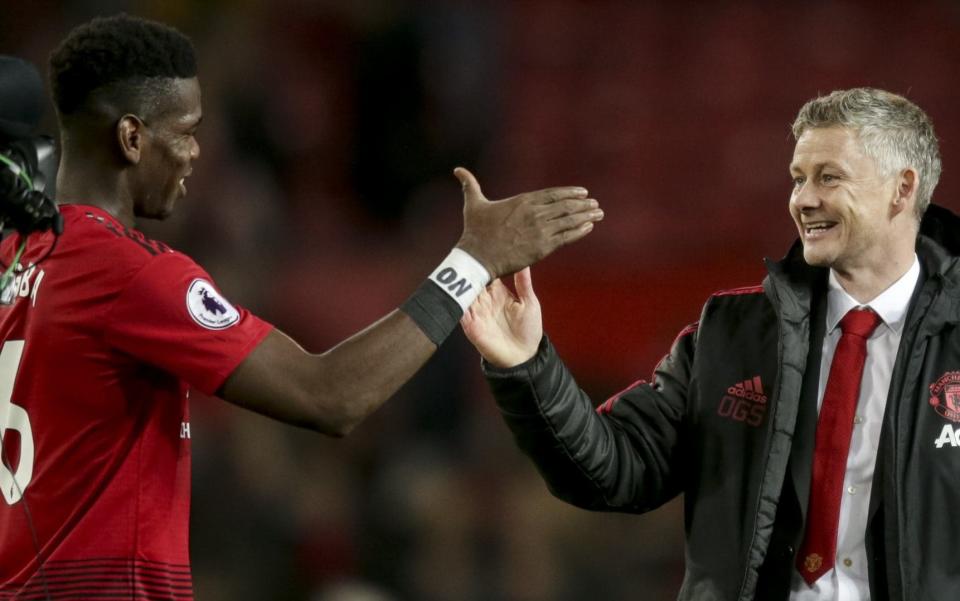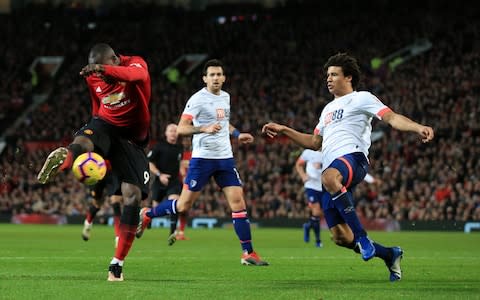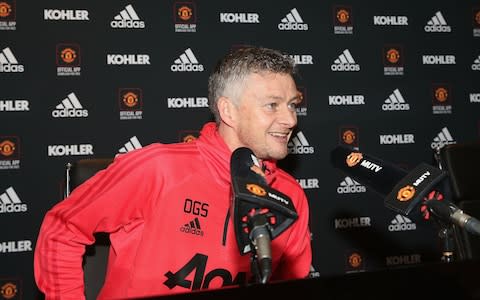The Ole Gunnar Solskjaer effect: Attacking tactics, positive press, happy faces... 7 key things he has changed at Man Utd

Under Jose Mourinho, Manchester United were stuck in a turgid rut - the Portuguese alienating players, fans and press alike with his tactics and demeanour.
Then along comes Ole Gunnar Solskjaer and you'd think that this was a completely different squad of players. United have cut loose in their three games since interim manager Solskjaer replaced Mourinho, scoring 14 goals on the way.
Even Sir Alex Ferguson was spotted smiling in the stands as Bournemouth were swatted aside at Old Trafford on Sunday.
So what has Solskjaer done to produce such a dramatic turn-around in attitude and fortune at United?
1. Improving the width of the team

In the darkest days of Jose Mourinho's tenure, his defence was very deep and flat. One immediate change Ole Gunnar Solskjaer has made has been to encourage his full-backs to push up the pitch. This has given energy and, naturally, width, but it has also given his central midfield more positive passing options.
Wayne Rooney, punditing about the Cardiff match, said that the approach was "something you'd never see under Mourinho."
Solskjaer himself said: "I'd like my full-backs to come. It's important in modern football to get the full-backs flying on."
2. Making a change to Lukaku's positioning

The Belgian striker, on paper, looked an ideal Mourinho guy: a strong, pacy, complete centre-forward capable of operating alone. But he has looked not so much the New Didier Drogba as a poor man's version. Power and presence had become immobility and isolation.
Solsjkaer has been working with Romelu Lukaku in training on a technical aspect of the centre-forward's role.
"He's a good target man but if you tell him to be a target man he'll never face the goal," he said. "Today [against Bournemouth] he was side on and then he can go in behind or go towards the ball."
The tweak, and the confidence resulting from it, led to a goal against Bournemouth and a tap-in against Newcastle last night. A functioning Lukaku could give Manchester United all sorts of options. "He's got the attributes of a top, top striker," said Solskjaer.
3. Pumping up Pogba

With four goals in two games before last night, and a massively improved mental attitude, Paul Pogba is the most obvious immediate beneficiary of the new manager's arrival.
It has sometimes been all too easy to forget that Pogba is, and should be, one of the best half-a-dozen players in the world. But where the late days of the Mourinho reign brought negativity, weak performances and apparent disinterest, working under Solskjaer is definitely working out for the Frenchman.
"We are more offensive, we create more chances, play higher," said Pogba. "So this is how we want to play, we want to attack, the manager wants to attack. And that’s what we are doing on the pitch."
Pogba's dressing-room standing and influence are huge and it was effectively impossible for Mourinho to succeed while Pogba was so alienated. Whatever the rights and wrongs of Pogba's behaviour, Solskjaer has clearly worked out that keeping the midfielder happy, by any means necessary, is key.

4. Not being a complete miserable bar steward
Mourinho's smouldering, utter self-assurance has given way in recent years to sourness, to petty score-settling, to sullen petulance – or at least that is the image he has come to portray in his media work.
It is clear that he was widely disliked by the dressing room at Manchester United, much as he came to be at Chelsea.
As the public face of a massive global brand, appearances matter and the world had just had enough of Mourinho's bitter moaning.
Like it or not, getting the media, and therefore the fans, onside is a part of the job.

Ole, in complete contrast to Mourinho, seems to be enjoying the role, enjoying meeting people and talking about it, enjoying being the manager of one of the world's great clubs. It's not too much to ask, is it?
5. Youth outreach

In Marcus Rashford and Jesse Lingard, United have two of the most exciting, talented and likeable young footballers we've had for many years.
Solskjaer, still boyish and enthusiastic at 45, has the knack of relating to young players – something that Mourinho had lost.
Many have observed that young footballers of 2019 have to be handled differently. Snowflake generation, whatever you feel you want to call it: clearly a vital part of football management is being able to communicate with people 20, 30, 40 years younger than yourself.
Mourinho had lost that. Solskjaer has it.
Look at Rashford's little professor hat emoji!
��⚽ pic.twitter.com/FnYILPGliq
— Marcus Rashford (@MarcusRashford) December 28, 2018
6. Being a United ledge

Solskjaer's standing was already high at United. It is pretty much impossible to find anyone with a bad word to say about the man.
Famously, he was happy to stay at Old Trafford and get game time off the bench rather than move to, in his eyes, a lesser club and be a starter.
Where Mourinho was never truly loved by United fans, Solskjaer arrived with a huge well of goodwill upon which to draw.
7. Rescuing the helpless
Alexis Sanchez, who will have earned over 100 billion dollars in the time it takes to read this article, has been a wretched lost sock at United.
Solskjaer's tactical plan is to use some combination of Sanchez, Rashford, Lingard, Lukaku, Anthony Martial et al as a more fluid front three, harking back to the great Sir Alex Ferguson 2006-era team when Cristiano Ronaldo, Carlos Tevez and Wayne Rooney interchanged and combined so well in that devastating attacking outfit.
“I think he’s looking forward to it," Solskjaer said of Sanchez. "It certainly looked like it on Saturday in the training session. He scored quite a few nice goals so that was encouraging.”

“I think he’s a player that would benefit from the interchanging, the rotation, the movement,” Solskjaer added. “The more chances you create, the more times you get the ball into the final third. He’ll be an asset for us."
If Solskajer can add a revitalised Sanchez to his other early gains of a happier Pogba, and encouraged Lukaku, a well-taught Rashford and Lingard, better attacking width, and a media and public receiving good vibes from the manager, then this could go down as one of the all-time great appointments.
And he's already proved he is a lucky general by having his first four matches against Premier League cannon fodder...


